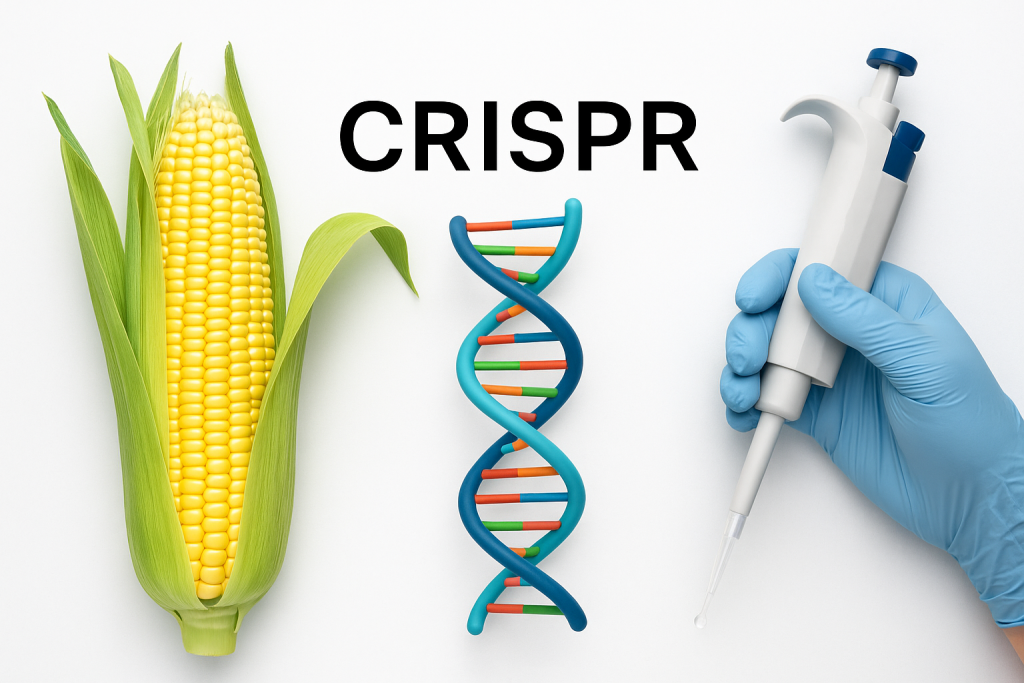The next revolution in food isn’t happening in the field—it’s happening in the code.
What Is CRISPR and Why It Matters
CRISPR (Clustered Regularly Interspaced Short Palindromic Repeats) is a gene-editing tool that allows scientists to modify DNA with precision. Think of it as a molecular “find and replace” function for genes.
In agriculture, CRISPR offers a faster, more targeted alternative to traditional breeding or even older genetic modification methods. Instead of inserting foreign DNA, scientists can fine-tune existing genes to enhance traits like drought tolerance, nutrient density, or pest resistance.
Building Climate-Resilient Crops
As global temperatures rise, food systems face unprecedented stress—from prolonged droughts to new pest migrations. CRISPR is being used to build resilience directly into plant genetics.
Researchers have already created rice that survives flooding, wheat resistant to heat, and tomatoes that retain nutrients longer. These advances could reshape agricultural productivity, especially in developing regions where climate change hits hardest.
The long-term goal isn’t just to save crops—it’s to future-proof food security for billions.
Nutrition by Design
Beyond survival, CRISPR is being used to optimize nutritional value. Scientists can amplify beneficial compounds—like vitamins or antioxidants—while reducing allergens or antinutrients.
Imagine school lunches made with crops designed for higher iron or vitamin A, or snacks made from low-acrylamide potatoes that reduce health risks. The shift from yield-focused to health-focused agriculture signals a new era of “precision nutrition” at the population level.
Regulation and Public Trust
The promise of gene-edited crops is powerful—but it arrives with complex public debates.
Unlike traditional GMOs, CRISPR doesn’t necessarily add foreign DNA. Many regulators view CRISPR-edited crops as closer to selective breeding than genetic modification. Still, global policies vary:
- U.S. and Japan have relatively open frameworks for CRISPR foods.
- European Union applies stricter GMO-style oversight.
- Developing nations are building new regulatory playbooks in real time.
For consumers, trust hinges on transparency. Labels, clear communication, and public literacy in biotechnology are crucial to prevent misinformation and build acceptance.
From Lab to Lesson Plan
For educators, CRISPR’s role in agriculture is a natural entry point to teach biology, ethics, and sustainability together. Students can explore:
- How genes influence traits.
- The trade-offs between innovation and ethics.
- How technology can address hunger and climate challenges.
In classrooms, CRISPR isn’t just a science topic—it’s a window into the future of problem-solving.
The Ethical Equation
The core question isn’t just can we engineer crops, but how should we? Ethical concerns include:
- Equity: Will small farmers access these technologies, or only large corporations?
- Ecological impact: How might edited traits affect ecosystems?
- Data ownership: Who controls the genetic “code” of our food supply?
These aren’t science questions alone—they’re societal ones, and they require cross-disciplinary dialogue.
The Road Ahead
CRISPR offers a realistic path toward feeding more people with fewer resources. But progress must move in sync with public understanding, equitable regulation, and transparent communication.
As this technology matures, it will redefine what we mean by “natural” food—and what responsible innovation looks like.
The next time we discuss “farm to table,” we might need to include a new step in the chain: code to crop.


